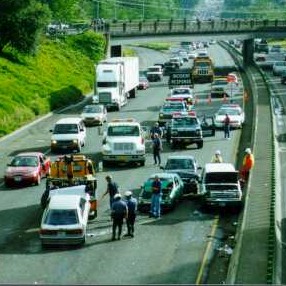Edward Thorndike:
1. Explain Thorndike's puzzle-box experiment.
1. Explain Thorndike's puzzle-box experiment.
It was a box specially made for cats so that the cats would get out of the box through trial and error. He saw that every time that cats made it more times they would get out easier.
2. Explain Thorndike's "Law of Effect".
The Law of effect says that responses closely followed by satisfaction will become firmly attached to the situation and therefore more likely to reoccur when the situation is repeated.
3. Explain Thorndike's "Law of Exercise".
3. Explain Thorndike's "Law of Exercise".
It states that stimulus-response associations are strengthened through repetition.
B.F. Skinner:
1. Explain Skinner's concept of Operant Conditioning
B.F. Skinner:
1. Explain Skinner's concept of Operant Conditioning
Operant Conditioning is a method of learning that occurs through rewards and punishments for behavior.
2. What does reinforcement always do?
2. What does reinforcement always do?
Every time the mice would push the pulley he would give him food.
3. What does a punishment always do?
He at the bottom had electricity and every time the mouse would try to do something else to get food they would electrocute him.
4. Explain the difference between "positive" and "negative" as they are used in operant conditioning.
4. Explain the difference between "positive" and "negative" as they are used in operant conditioning.
Positive is when the animal gets a reward for doing something, and negative is when the animal gets punished for doing something wrong.




